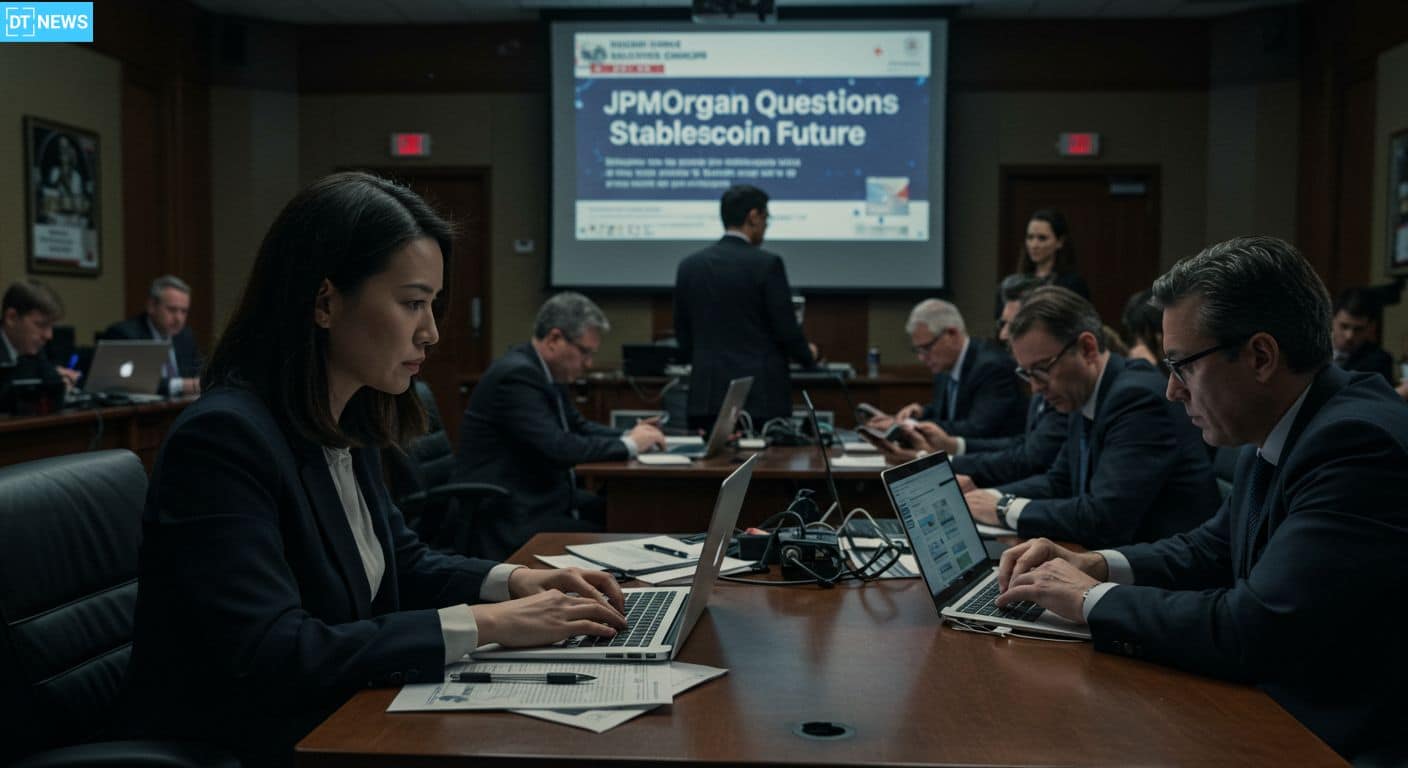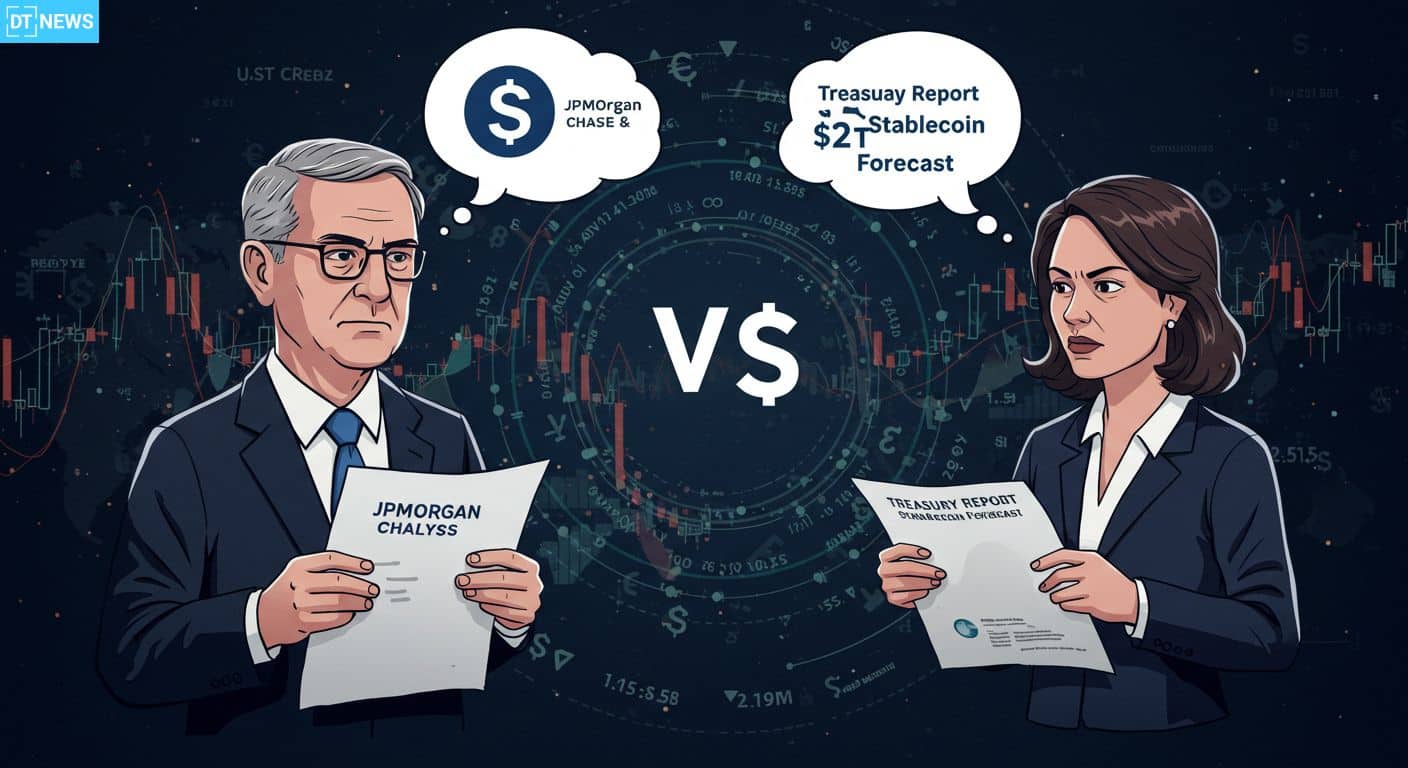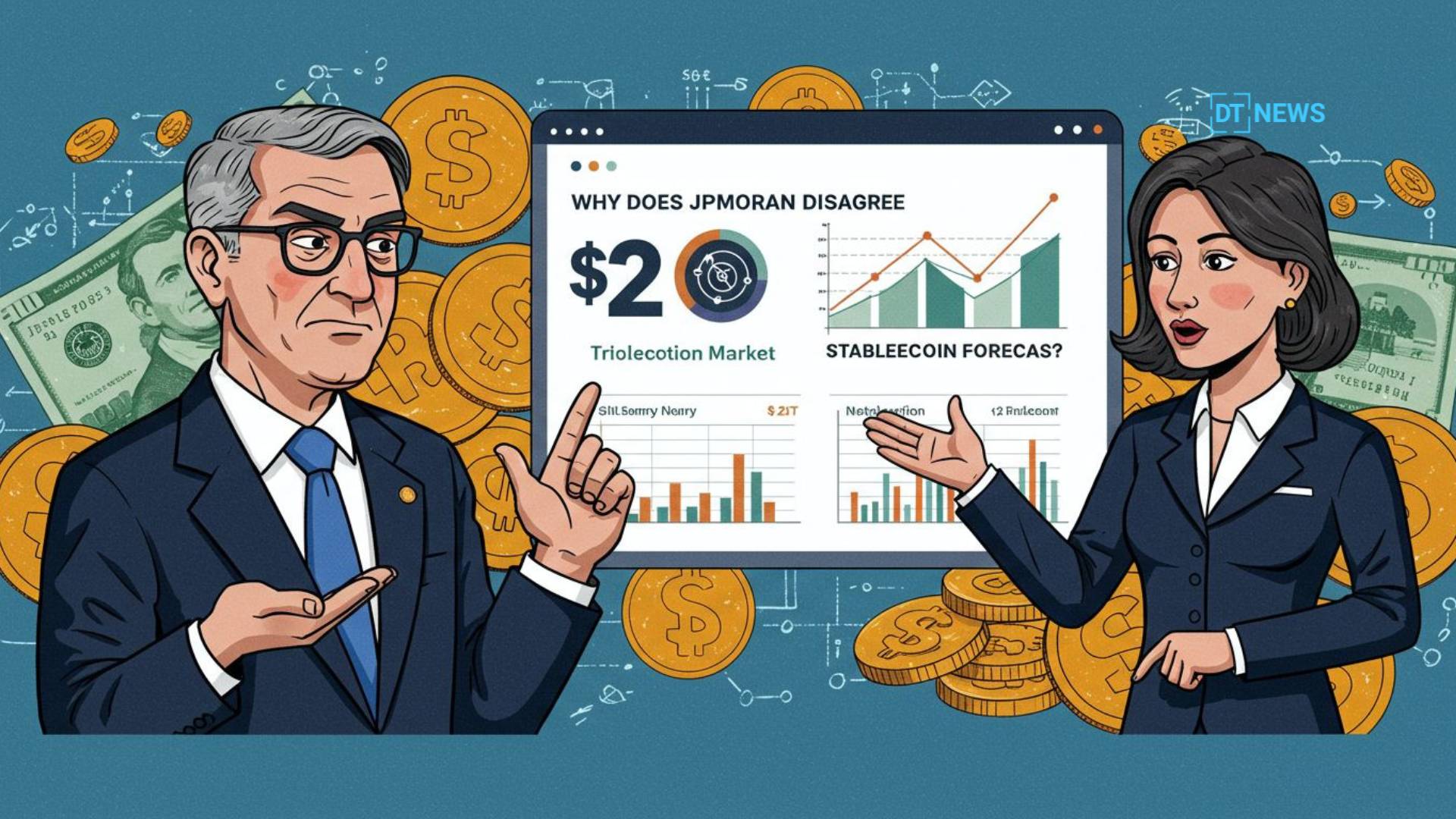JPMorgan has poured cold water on the US Treasury’s prediction that the stablecoin market will reach $2 trillion by 2028. In a July research note, the bank’s strategists said that it was “a bit optimistic” and that fundamental infrastructure gaps and conservative investor attitudes will slow growth.
- JPMorgan Cites Infrastructure Gaps
- Despite Dimon’s Skepticism, JPMorgan is Still Exploring Stablecoin Tech
- Experts Weigh In
- Conclusion
- FAQs
- What does JPMorgan think about the $2 trillion stablecoin forecast?
- How big is the stablecoin market now?
- What is the GENIUS Act?
- Why is infrastructure so important for stablecoin adoption?
- Glossary
According to JPMorgan’s revised forecast, stablecoins (led by USDT and USDC) will more likely double or triple in size to $500 or $750 billion over the next 3 years.
JPMorgan Cites Infrastructure Gaps
While political momentum is building around digital assets (especially with the passage of the GENIUS Act which provides a regulatory framework for payment stablecoins) JPMorgan says the infrastructure to support mainstream adoption is still missing.
The report notes that stablecoin usage is heavily concentrated in crypto-native environments. Only 6% of total demand is tied to real world payments, $15 billion, the rest is for trading, DeFi and institutional crypto custody.

This concentration of usage in JPMorgan’s view is that the stablecoin market is heading towards half a trillion not trillions.
Despite Dimon’s Skepticism, JPMorgan is Still Exploring Stablecoin Tech
Despite Jeremy Dimon’s well known skepticism towards crypto at times, JPMorgan is still involved in stablecoin innovation. During the Q2 earnings call, Dimon said the bank is actively exploring stablecoin tech, specifically through its internally developed pilot “JPMD” a deposit-token system for institutional clients.
JPMorgan is joined by Bank of America, Citigroup and Wells Fargo which means regulators and big financial players are taking digital payment platforms seriously even if mass market adoption is still in its infancy.
Experts Weigh In
On the other side of the argument, US Treasury Secretary Scott Bessent is more optimistic that regulated, US backed stablecoins will reach or exceed $2 trillion by 2028.
Testifying before a Senate panel, Bessent said that legislative support such as the GENIUS Act’s requirement for asset backing with US Treasuries or T-Bills will drive global dollar usage through stablecoins. He said clear regulation and investor confidence building is key to turning stablecoin market forecast into reality.
Ripple’s CEO Brad Garlinghouse also weighed in, saying the stablecoin market could hit $2 trillion soon. On CNBC, he pointed to Ripple’s RLUSD as proof institutional-grade tokens can drive growth.
Standard Chartered agrees with the Treasury’s view and is also projecting a stablecoin market size of $2 trillion by 2028 under favorable conditions.

Conclusion
Based on the latest research, while the stablecoin market forecast is up for debate, JPMorgan’s view is notable for being grounded in real usage and infrastructure readiness. Despite the differing forecasts, everyone agrees: real-world adoption of stablecoins is slow, hindered by regulatory uncertainty, payment infrastructure and institutional liquidity managers’ caution.
JPMorgan’s analysts say even with supportive laws, investors and businesses won’t treat stablecoins as cash substitutes for traditional cash given liquidity, yield and operational readiness concerns. Read more about Stablecoins.
For in-depth analysis and the latest trends in the crypto space, our team offers expert content regularly.
Summary
JPMorgan disagrees with the US Treasury’s $2 trillion stablecoin market forecast by 2028, saying infrastructure is not ready and investor adoption is limited. The bank projects $500 billion to $750 billion by then, citing minimal real-world payment use. Treasury Secretary Scott Bessent is optimistic, saying regulated frameworks like the GENIUS Act will drive growth. Ripple agrees with $2 trillion.
FAQs
What does JPMorgan think about the $2 trillion stablecoin forecast?
JPMorgan thinks the $2 trillion stablecoin forecast is too high, citing slow infrastructure development and cautious investor behavior as the main obstacles.
How big is the stablecoin market now?
As of July 2025, the global stablecoin market is around $270 billion with USDT and USDC holding over 60% of the market share.
What is the GENIUS Act?
The GENIUS Act is a US law passed in 2025 to create a regulatory framework for stablecoins. It aims to strengthen the dollar’s position in digital finance.
Why is infrastructure so important for stablecoin adoption?
Robust infrastructure means security, scalability and interoperability of stablecoins – essential for big institutions to adopt.
Glossary
Stablecoin: a type of cryptocurrency that maintains a stable value by being pegged to a reserve asset like the US dollar.
USDT (Tether): largest stablecoin by market cap, pegged to the US dollar.
USDC (Circle): US based stablecoin pegged to the dollar, known for its regulatory transparency.
JPMD: JPMorgan’s experimental deposit token for institutional clients, mimicking some stablecoin features.
Institutional Investor: Banks, hedge funds or pension funds that invest large sums and move the market.
Liquidity: ease at which assets can be converted into cash without affecting the market price.



















































































































